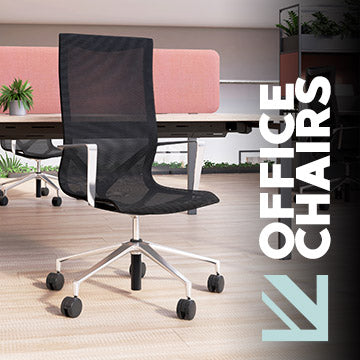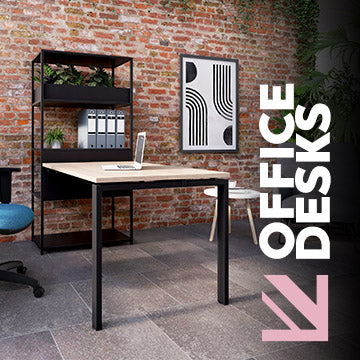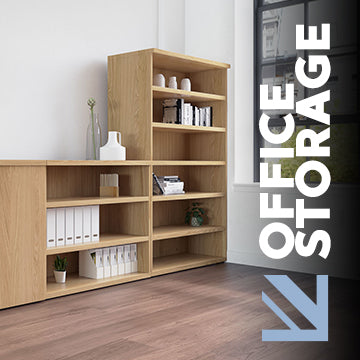
What Is an Ergonomic Desk?

Whether for a home office or a larger workspace, choosing a desk can be challenging. You don’t want to spend more than you have to. But at the same time, you don’t want to choose a product that may make the user uncomfortable. A good desk needs to be practical and comfortable. And for that reason, an ergonomic desk can be a really good idea. But how do you know if the desk you’re buying is ergonomic?
What You Need to Know About Choosing an Ergonomic Desk
What is an ergonomic desk?
An ergonomic desk is a desk that has been designed using the principles physiology and psychology, as well as design and engineering. The aim is to create a piece of furniture that can promote productivity while sustaining a healthy posture. And, importantly, ergonomic desks should allow for the easy navigation of the workspace. So, no awkward angles, no unnecessary stretching, no strained muscles or painful joints.
Why would you choose an ergonomic desk?
The primary reason people buy ergonomic desks is to avoid injury. If you work at a desk all day, it’s easy to develop a range of health complaints. From repetitive strain injury and back pain to carpal tunnel syndrome. Because ergonomic desks are designed with the user in mind, they are usually height adjustable. They also allow for the easy placement of work tools, such as computer screen and keyboard, to avoid an uncomfortable posture. Many ergonomic desks are designed for corner working to allow for the more comfortable access of the desk’s surface.
What can you do to make your workspace as ergonomic as possible?
1. Invest in ergonomic furniture – When you invest in ergonomic furniture, chairs as well as desks, half of the work is done for you. Your chair will support your body, preventing aches and strains. And your desk will do the same, by providing easy access to everything you need without the need to stretch or reach.
2. Position your equipment well – Make sure that your desk is at the right height for you. And that your chair is at the right height for your desk. If this means that you can’t comfortably get your feet flat on the floor, consider investing in a footrest too. Place your keyboard so that you can rest your wrists on it without stretching – a sliding keyboard tray can be beneficial. And position your screen so that you can use it without twisting your neck. Ideally, you should be able to look straight ahead, so that your eyes are in line with a point on the screen about 5-10 cm below the top edge of the monitor.
3. Consider accessories – Certain accessories, such as footrests, can help to provide your body with additional support to avoid aches and strains. Some ergonomic chairs come with adjustable lumbar support. If yours doesn’t, you can purchase a lumbar cushion. If you work for long hours, you might even want to consider a split design ergonomic keyboard, or a laptop stand. An ergonomic mouse can also help to relieve hand and wrist strain.
An ergonomic desk can change the way you work. It can not only enhance your comfort while you work, but also improve your productivity. Why? Because the more comfortable you feel when working, the less you fidget and the easier it is for you to concentrate.
Ergonomic desks aren’t essential. But if you work long hours, or you’re looking to get he best from your teams – and reduce staff absences – they can make a genuine difference.
Are you looking for equipment for your office? Visit UK Office Furniture for inspiration.




















